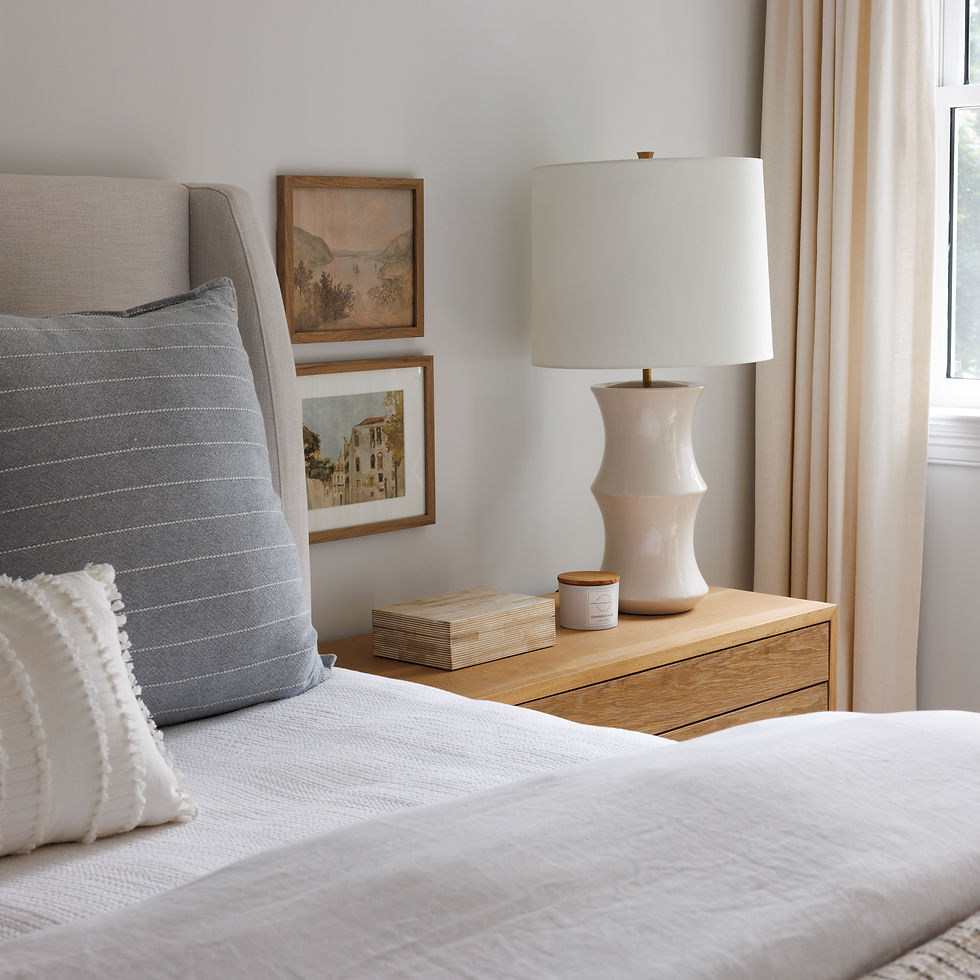Design Style Series: Transitional
- Madison Lussier
- Jul 20, 2021
- 3 min read

Designed by Madison Nicole Design
Photograph by Lindsey Drewes Photography
Have you ever wondered what "transitional" style really means? Or what are you transitioning from? It's one of those ambiguous design terms that gets thrown around to make it seem like whoever is using it is in the know. Today, we're going to dive into what this style actually means, so you can feel good about shopping with a friend and knowing what to look for to achieve this style! This is the second post in our summer series about different design styles - if you missed our first post on Spanish interiors, click here to catch up. Scroll through for our thoughts on how to recognize transitional style and achieve it gracefully!

Designed by Beth Hammel Interiors
WHAT IS TRANSITIONAL STYLE?
Transitional style is the sweet spot between traditional and modern sensibilities, which leads to the perception of these spaces as timeless, balanced, and warm. And if you ever wonder if transitional was actually an in-between style, you are right! Transitional style was a reaction to the clean lines of the mid-century movement in the 1950's, which had deviated so far from traditional style before it.
Furniture silhouettes you would find in a traditional space (like a four poster canopy bed) are paired with a sleeker nightstands and cozy chairs, and linen draperies rather than heavy pattern draperies from the past. Or architectural elements, like wainscoting in the photo above, are paired with low pile textured rugs and subtle plaid throw pillows that are more modern.

Designed by Studio McGee
Transitional Spaces Have Balance
This living room by Studio McGee is a great example of the key to transitional spaces - balance! We love the more traditional wood framed daybed paired with a big, cozy bench seat sofa, and modern curved chairs in a more traditional velvet fabric. Also notice the cleaner lines of the lighting - the pendants above the kitchen island and the chandelier in the living room have been stripped of any extra ornamentation (which would be more traditional) but still make an impact with the essential lines to create that silhouette (a more modern take).

Image from serenaandlily.com
Comfort is Paramount
The formality of traditional style or interesting silhouettes that are more modern will not be more important than comfort. Transitional spaces are known for being warm, inviting, and more laid-back, so dining nooks like the one above include tie seat cushions, plush throw pillows and seat cushions for an updated take on a built in bench. There shouldn't be any hesitation from guests that come over to have a seat and get cozy!

Designed by Studio McGee
Neutral Tones & Texture
You can absolutely use color in transitional style spaces, but more muted versions of color and neutrals are a giveaway of this style. We love the updated Shaker style black dining chairs above, and how they tie in with the lantern chandelier above. These two pieces serve as the main contrast to the natural wood dining table. The subtle gray pattern and texture of the rug adds just enough to break up the wood dining table on top of the wood flooring. There's even neutral tones in the landscape artwork on the wall!

Image from rejuvenation.com
Transitional style is widely popular because it really marries the best of both worlds - are you a fan? Let us know in the comments below!



.png)
Comments